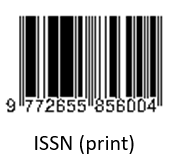Image Detection Analysis for Javanese Character Using YOLOv9 Models
(1) Sanata Dharma University
(*) Corresponding Author
Abstract
Full Text:
PDFReferences
D. Iskandar, S. Hidayat, U. Jamaludin, and S. M. Leksono, “Javanese script digitalization and its utilization as learning media: an etnopedagogical approach,” International Journal of Mathematics and Sciences Education, vol. 1, no. 1, 2023, pp. 21–30.
A. Susanto, I. U. W. Mulyono, C. A. Sari, E. H. Rachmawanto, and R. R. Ali, “Javanese character recognition based on k-nearest neighbor and linear binary pattern features,” Kinetik: Game Technology, Information System, Computer Network, Computing, Electronics, and Control, 2022, pp. 309–316.
F. T. Anggraeny, Y. V. Via, and R. Mumpuni, “Image preprocessing analysis in handwritten Javanese character recognition,” Bulletin of Electrical Engineering and Informatics, vol. 12, no. 2, 2023, pp. 860–867.
I. F. Katili, M. A. Soeleman, and R. A. Pramunendar, “Character Recognition of Handwriting of Javanese Character Image using Information Gain Based on the Comparison of Classification Method,” Jurnal RESTI (Rekayasa Sistem dan Teknologi Informasi), vol. 7, no. 1, 2023, pp. 193–200.
M. A. Rasyidi, T. Bariyah, Y. I. Riskajaya, and A. D. Septyani, “Classification of handwritten Javanese script using random forest algorithm,” Bulletin of Electrical Engineering and Informatics, vol. 10, no. 3, 2021, pp. 1308–1315.
A. Prasetiadi, J. Saputra, I. Kresna, and I. Ramadhanti, “YOLOv5 and U-Net-based Character Detection for Nusantara Script,” Jurnal Online Informatika, vol. 8, no. 2, 2023, pp. 232–241.
J. Redmon and A. Farhadi, “Yolov3: An incremental improvement,” arXiv preprint arXiv:1804.02767, 2018.
H. Sugiharto, “Aksara Jawa YOLO v5 Dataset.” [Online]. Available: https://www.kaggle.com/datasets/hermansugiharto/aksara-jawa-yolo-v5-dataset. [Accessed: May 04, 2024]
A. Budi, “Hanacaraka dan Makna Bijak di Baliknya.” [Online]. Available: https://www.goodnewsfromindonesia.id/2017/01/23/hanacaraka-dan-makna-bijak-di-baliknya. [Accessed: May 15, 2024]
M. Hussain, “YOLO-v1 to YOLO-v8, the rise of YOLO and its complementary nature toward digital manufacturing and industrial defect detection,” Machines, vol. 11, no. 7, 2023, p. 677.
C. Koylu, C. Zhao, and W. Shao, “Deep neural networks and kernel density estimation for detecting human activity patterns from geo-tagged images: A case study of birdwatching on flickr,” ISPRS Int J Geoinf, vol. 8, no. 1, 2019, p. 45.
DOI: https://doi.org/10.24071/ijasst.v6i1.8779
Refbacks
- There are currently no refbacks.
Publisher : Faculty of Science and Technology
Society/Institution : Sanata Dharma University

This work is licensed under a Creative Commons Attribution 4.0 International License.











